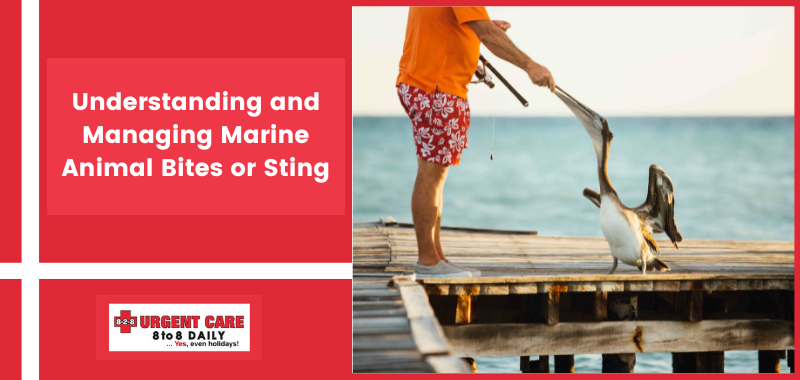


Beneath the waves, where the mysterious realms of the ocean unfold, lie aquatic life well-armed with stings and bites. These sneaky attacks can be deadly and toxic and are launched by marine organisms, including the iconic jellyfish.
According to research, around 2,000 hazardous organisms are found across the vast ocean, threatening mankind. Most of these creatures have been known to be lethal and even cause fatal illnesses. Summer is here, so more incidents are expected to happen along the coast of southern California.
For a safe and fun summer in the ocean, here is a guide to help you navigate yourself through marine life to avoid any unpleasant instances.
The ocean is a habitat for various creatures that pose a hazard to humans. Commonly encountered sea animals that sting and the dangers they serve–
Here is a list of basic marine sting and bite symptoms—
Marine bites can be identified with the following—
Here are common symptoms of the marine sting —
In addition to asking you to describe your symptoms, your healthcare practitioner will also look at the affected region. Your physician will assess the wound's depth and search for infection indicators. You might require the following:
Here are some proven methods for dealing with marine bites—
Be Conscious of Your Environment
When swimming in the ocean, it is important to remain alert and aware of your surroundings.
Observe Local Safety Regulations
Learn the local safety regulations, and follow any posted signs or cautions at beaches or dive sites.
Wear Protective Equipment
Utilize the proper safety equipment, such as diving skins or wetsuits, to minimize the possibility of coming into touch with marine creatures.
Prevent Provoking or Touching Marine Life
Keep your distance from marine animals so they won't feel threatened and bite or sting you in retaliation.
Avoid Areas Where Marine Creature Nesting or Breeding
As marine creatures are more protective of their nesting or breeding places and often act aggressively, use caution in certain locations.
Swim in Specific Areas
Stay in the approved swimming areas when lifeguards are on duty; they can direct you and help in an emergency.
Acquire Knowledge
Consider any dangerous species and learn about sea animals that sting before visiting any coastal region.
Do not Swim in Peak Season
Avoid swimming when there is a lot of activity to reduce the likelihood of running into something.
Risks from a marine animal bite or sting include:
Be mindful of your surroundings, use protective gear, stay out of marine life, and avoid contact with the sea animals that sting. Get instant medical help if you suspect any illness from a bite or have allergies. A timely medical intervention within 24 hours alleviates the soreness and brings you back to a normal lifestyle!
At 8-2-8 Urgent Care in Oceanside, California, our providers specialize in treating severe allergic disorders, stings and bites.
We are trained to provide relief as fast as possible and offer skilled pain management, from the tiniest sea urchin sting and jellyfish sting treatment to providing life-saving stingray sting treatment.
You can also contact 8-2-8 Urgent Care, and our staff will walk you through our online check-in from the convenience of your home! Call (760) 216-6253.
Content Source: Mount Sinai